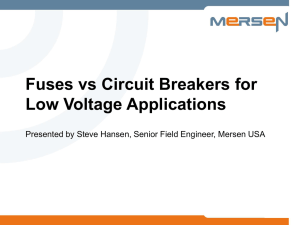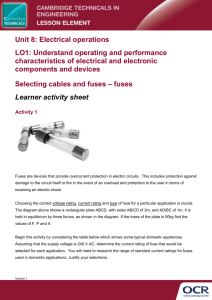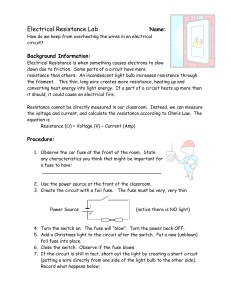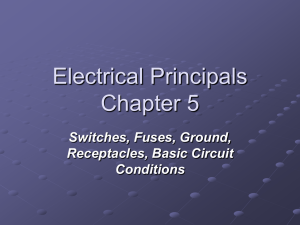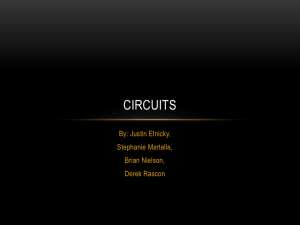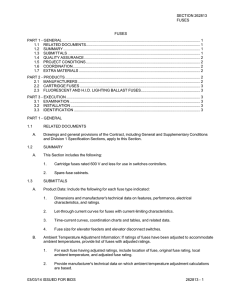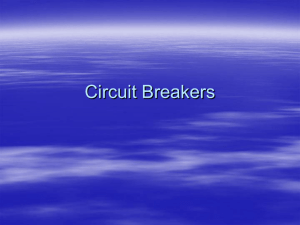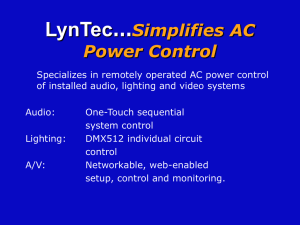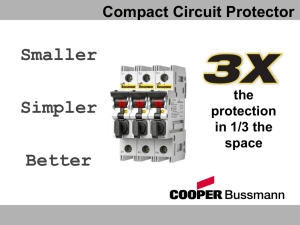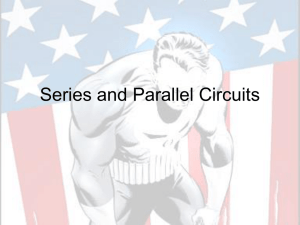Presentation 10
advertisement
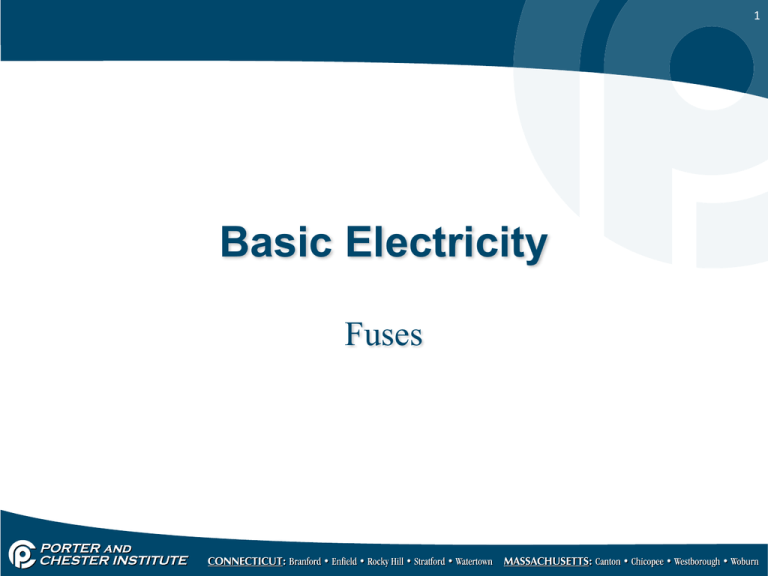
1 Basic Electricity Fuses 2 What is a fuse? • A fuse is a simple device used to protect circuits from over-loading and overheating. • Most fuses contain a strip of metal that has a higher resistance than the conductors in the circuit. • This strip also has a very low melting point. • Since it has a higher resistance, it will heat up faster than the conductors. 3 • When the current exceeds the rating on the fuse, the strip melts and opens the circuit. • Fuses are one time devices and must be replaced when the strip or element melts. • The cause for the circuit overload must be identified and corrected before replacing the fuse. 4 Plug Fuses • Plug fuses have either an Edisonbase or a type S base. • Edison base fuses are used in older installations and can be used for replacement only. • The type S fuse can be used only in type S fuse holders. Otherwise an adapter must be used. • Plug fuses are rated up to 125 V and 30 A. 5 Dual Element Plug Fuses • Many circuits have electric motors as the load or part of the load. • Motors draw more current when starting and can cause a plain fuse to burn out or open the circuit. • Dual element fuses are frequently used in this situation. 6 • One element in the fuse will melt when there is a large overload, such as a short circuit. • The other, will melt and open the circuit when there is a smaller current overload lasting more than a few seconds. • This allows for the larger starting current of an electric motor. 7 Cartridge fuses • For 230 v to 600 v service up to 60 A, the ferrule cartridge fuse is used. • From 60 A to 600 A, knife-blade cartridge fuses can be used. • A cartridge fuse is sized according to its amperage rating to prevent a fuse with inadequate rating from being used. • Many cartridge fuses have an arcquenching material around the element to prevent damage from arcing in severe short circuits. 8 Knife- Blade cartridge fuse 9 Circuit Breakers • A circuit breaker can function as a switch as well as a means for opening a circuit when an overload occurs. • Most modern houses and commercial buildings use circuit breakers. 10 • Circuit breakers use two methods to protect the circuit. • One is a bimetal strip that heats up with a current overload and trips the breaker, opening the circuit. • The other is a magnetic coil that causes the breaker to trip and open the circuit when there is a short circuit or other excessive current overload in a short time. 11 Internals of a circuit breaker 12
